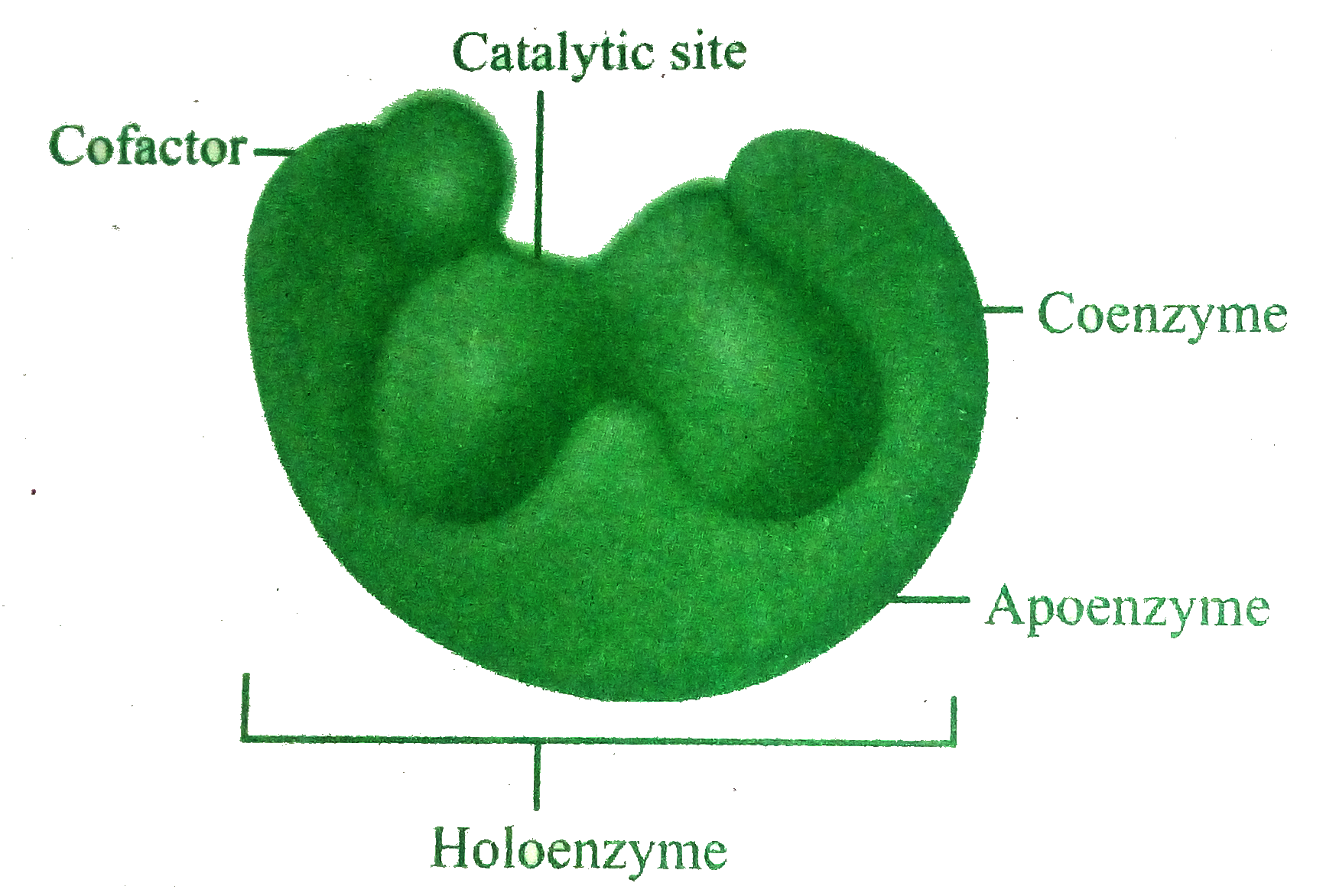What are the types of cofactors? Explain each of them. Solution in Tamil
(1) Many enzymes require non-protein components called cofactors for their efficient activity. Cofactors may vary from simple inorganic ions to complex organic molecules. They are of three types: inorganic ions, prosthetic groups and coenzymes.
(ii) Holoenzyme:Active enzyme with its non protein component.
(iii) Apoenzyme: The inactive enzyme without its non protein component.
(iv) Inorganic ions to increase the rate of reaction catalysed by enzymes. Example:Salivaryamylase activity is increased in the presence of chloride ions.
(V) Prosthetic groups are organic molecules that assist in catalytic function of an enzyme. Flavin adenine dinucleotide (FAD) contains riboflavin(vit B2), the function of which is to accept hydrogen. .Haem. is an iron-containing prosthetic group with an iron atom at its centre.
(vi) Coenzymes are organic compounds which act as cofactors but do not remain attachedto the enzyme. The essential chemical components of many coenzymes are vitamins. eg. NAD, NADP, Coenzyme A, ATP.

Topper's Solved these Questions
Similar Questions
The most abudant chemical in living organisms could b
View SolutionDraw and label the events of cell cycle.
View Solutionसन्धि ट्रान्जिस्टर किसे कहते हैं ? ये कितने प्रकार के होते हैं ?उन्हें संक्षेप में चित्र द्वारा समझाइये। ट्रान्जिस्टर का दोलित्र के रूप में प्रयोग का वर्णन परिपथ द्वारा समझाइये।
View Solutionट्रान्जिस्टर किसे कहते हैं ? ये कितने प्रकार के होते हैं ? इनके प्रतीक चिह्न खींचकर इनमें अन्तर स्पष्ट कीजिए।
View Solutionव्यतिकरण के कौन-कौन से प्रकार हैं? प्रत्येक को समझाइये।
View Solutionमॉडुलन कितने प्रकार का होता है ? प्रत्येक प्रकार को समझाइए ।
View SolutionWhat are the types of respiration present in bacteria? Explain any one of them.
View SolutionWhat is a front? How many types of front are there? Explain all of them.
View SolutionName the two types of organic cofactors.
View SolutionWhat are cofactors for enzymes? Name any two types of cofactors.
View SolutionExplain briefly enzyme cofactors.
View SolutionObserve the given tissues and explain the types of body symmetry in each of them.
View SolutionObserve the given tissues and explain the types of body symmetry in each of them.
View SolutionObserve the given tissues and explain the types of body symmetry in each of them.
View SolutionWhat are cofactors? Give a brief account of various types of cofactors?
View Solution
